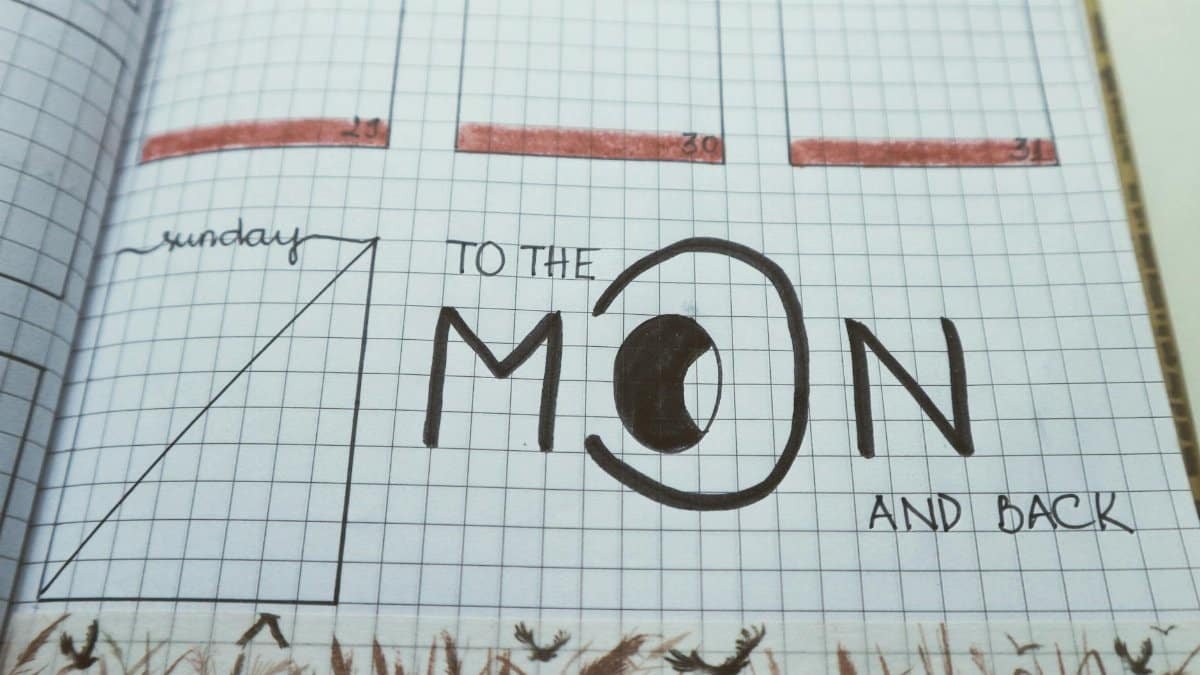In bustling cities like Seattle or Austin, where wellness trends often blend with daily life, a quiet ritual is gaining traction among those seeking deeper self-connection. Moon journal prompts, tied to the lunar cycle’s rhythms, are appearing in coffee shop conversations and online communities, as people turn to them for building self-trust amid uncertainty. This practice isn’t new—rooted in ancient traditions—but its modern resurgence reflects a broader cultural shift toward intuitive living. As Americans grapple with stress and decision fatigue, these prompts offer a structured yet flexible way to reflect, aligning personal growth with the moon’s phases. What started as niche spiritual exercises has evolved into accessible tools for anyone looking to foster inner confidence, drawing on the natural ebb and flow of celestial patterns to guide introspection.
1. New Moon: Setting Intentions for Self-Belief

The new moon marks a time of beginnings, a blank slate in the sky that invites fresh starts. Consider this prompt: What small action can I take this cycle to affirm my own capabilities? Journaling here encourages listing past successes, no matter how minor, to build a foundation of trust. One woman, reflecting on her career pivot during a recent new moon, described jotting down forgotten achievements—like mastering a complex recipe or navigating a tough conversation—which shifted her self-doubt into quiet assurance. Research from the American Psychological Association highlights how such reflective practices enhance self-efficacy, turning abstract intentions into tangible steps. Vary your entries with sensory details: the feel of pen on paper under dim light, mirroring the moon’s hidden phase.
2. Waxing Crescent: Identifying Inner Strengths

As the moon sliver grows, so does momentum. Prompt: Which personal strengths have I overlooked, and how can they light my path forward? This invites exploration of hidden talents, perhaps through free-writing or mind mapping. Imagine a middle-aged teacher, stressed by classroom demands, who used this phase to rediscover her patience as a core strength, leading to more confident lesson planning. It’s not about grand revelations but subtle acknowledgments. Studies from the Positive Psychology Center at the University of Pennsylvania show that recognizing strengths boosts resilience, making this prompt a practical tool for self-trust. Keep responses dynamic—short bursts one day, deeper dives the next—to match the crescent’s building energy.
3. First Quarter: Overcoming Self-Doubt Barriers

Half-illuminated, the first quarter moon symbolizes action amid tension. Try: What doubts block my trust in myself, and what one step can dissolve them? This prompt pushes for honest confrontation, perhaps charting fears on one page and countermeasures on another. A man in his forties, facing job insecurity, shared anonymously in an online reflection how naming his imposter syndrome during this phase led to seeking mentorship, gradually eroding those barriers. Evidence from the National Institute of Mental Health underscores journaling’s role in managing anxiety, fostering a sense of control. Experiment with dialogue format in your entries, questioning doubts as if in conversation, to make the process feel alive and immediate.
4. Waxing Gibbous: Nurturing Growth Mindset

Approaching fullness, this phase amplifies refinement. Prompt: How has a past challenge helped me grow, and what does that teach about my resilience? Reflect on lessons learned, weaving in gratitude for hardships overcome. Picture a parent journaling late at night, recounting a family crisis that revealed untapped emotional strength, transforming worry into empowerment. The Centers for Disease Control and Prevention notes that such mindfulness exercises promote mental well-being, aligning with moon journal prompts’ emphasis on cyclical growth. To vary, incorporate sketches or symbols alongside words, capturing the moon’s swelling light in visual metaphors for personal expansion.
5. Full Moon: Celebrating Personal Achievements

At peak illumination, the full moon calls for release and recognition. Ask: What accomplishments deserve my celebration, and how do they reinforce my self-trust? This could involve a list of wins, big or small, followed by why they matter. One individual, amid a wellness retreat, vividly recalled illuminating forgotten milestones—like completing a marathon training program—which flooded her with affirming light. Insights from Harvard’s studies on positive emotions suggest this builds emotional reserves, much like the moon’s glow. Make it festive: light a candle while writing, letting the ritual enhance the sense of abundance and inner validation.
6. Waning Gibbous: Releasing Limiting Beliefs

As light diminishes, focus on letting go. Prompt: Which beliefs no longer serve my self-trust, and how will I release them? This might mean writing unsent letters to old doubts or burning symbolic notes. A retiree, transitioning to new hobbies, used this to shed notions of inadequacy, finding freedom in the moon’s retreat. Psychological research supports this, with techniques like cognitive reframing aiding belief shifts. Vary by timing entries at dusk, syncing with the phase’s energy to make release feel natural and profound.
7. Last Quarter: Reflecting on Lessons Learned

Balance returns in this half-lit phase. Consider: What key lessons from this cycle strengthen my trust in my decisions? Review the past weeks, noting patterns. Someone navigating relationship changes described how this reflection clarified intuitive choices, turning hindsight into foresight. Active voice drives this: actively note, connect, apply. It fosters continuity in moon journal prompts, bridging phases seamlessly.
8. Waning Crescent: Preparing for Renewal

Fading to darkness, this invites rest. Prompt: What self-care practices will renew my trust as the cycle ends? List gentle habits, like reading or walks. A busy professional found solace here, planning downtime that rebuilt her inner reserves. This preparatory step ensures cycles build cumulatively, enhancing overall self-trust.
9. New Moon: Exploring Core Values

Back to beginnings, delve deeper: What values anchor my self-trust, and how can I align daily actions with them? This builds on prior intentions, refining focus. Anecdotes show people realigning careers this way, gaining clarity. It ties into wellness trends emphasizing authenticity.
10. Waxing Crescent: Building Daily Affirmations

Growth resumes: Craft affirmations that boost self-trust—what phrases resonate most? Repeat and reflect. One account highlighted turning skepticism into belief through consistent practice, mirroring the moon’s incremental light.
11. First Quarter: Facing Fears Head-On

Action phase: What fear challenges my trust, and what’s my plan to confront it? Strategic planning here turns apprehension into achievement, supported by resilience studies.
12. Waxing Gibbous: Honing Intuitive Skills

Refinement: How can I tune into my intuition more sharply for better self-trust? Exercises like meditation notes sharpen this, as shared in personal stories of decision-making breakthroughs.
13. Full Moon: Embracing Vulnerability

Illumination: In what ways does vulnerability enhance my self-trust? Explore openly, celebrating openness as strength, illuminated by the moon’s full face.
14. Waning Gibbous: Forgiving Past Mistakes

Release: Which past errors can I forgive to free up trust? This cathartic prompt lightens emotional loads, fostering forward momentum.
15. Last Quarter: Evaluating Progress

Balance: How has my self-trust evolved this cycle? Measure growth objectively, adjusting for the next phase with informed insight.
16. Waning Crescent: Visioning Future Trust

Rest and vision: What vision of unshakeable self-trust do I hold for the coming cycles? Dream big, planting seeds in the quiet, ready for the new moon’s rebirth. This closes the loop, making moon journal prompts a sustained path to inner strength.
